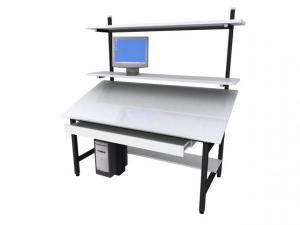20 Tips for Starting Your Own Architectural Firm
Through our work with architects over the years, we’ve uncovered a set of career tips for architects who want to launch their own architectural firm.
Through our work with architect professionals over the years, we’ve uncovered a set of career tips for young architects who want to apply their ambition, talent, and hard work toward launching their own architectural practice one day.
Not every tip applies to every situation, but we think you’ll find these insights both interesting and useful.
1 Use Your Intern Hours Wisely.
The first recommendation comes from those that look back on their many hours working as an intern: make the most of this time. Acquiring as broad a range of experiences as possible will help you establish yourself earlier in your career.
Join and volunteer for the American Institute of Architects (AIA); visit their website to learn about the different ways you can earn experience hours. Opening doors now will pay dividends later in the form of increased career opportunities.
2 Find a Mentor.
Seek out and appreciate mentoring opportunities throughout your career.
Mentors can help teach you things about the real-world of architectural design and construction you’ll never learn in school.
Mentors and other significant role models can help you identify which areas of architectural practice you want to pursue.
They can also lead to significant business relationships that could further your career. It’s not unheard of for a professional mentoring relationship with a senior solo practitioner to lead to a transition plan where you acquire the mentor’s firm upon his or her retirement.
Don’t forget to return the favor when the time comes to pass on your skills and insight to the up-and-coming new generation of architects.
3 Build a House.
Build a house? Really?
Yes.
Classes at top-notch architectural programs do prepare you to work with construction companies.
But in reality, there’s nothing like getting hands-on experience under the leadership of an experienced contractor to learn first-hand about construction details in real-world situations.
You may discover that you have a penchant for residential design – if so, establishing a relationship with the builder early on in your career can be very advantageous.
Want to learn more before working with a contractor? Why not help build a house as a volunteer for Habitat for Humanity?
4 Design and Build your own Furniture.
For many successful architects, designing furniture is a lifelong obsession.
Long before you will receive your first design commission, you’ll be able to create furniture designs for your portfolio – with your name on it – that can give you a competitive advantage in promoting your design skills.
If you’ve created a unique design for a workbench1, desk, office system, storage unit, you can hire Formaspace to produce a one-off copy, a limited production run, or even a full-production run.
Imagine how installing custom furniture you’ve design on a client project can help establish yourself as an up-and-coming designer – a big step toward creating your own architecture practice.
5 Develop Hand Skills, not just CAD Skills.
There’s no question that the arrival of sophisticated software tools like AutoDesk’s AutoCAD and Revit have revolutionized architectural design, drafting, and production workflows.
But if your ambition is to have your own firm, don’t miss the opportunity to develop your own hand drawing skills – the ability to quickly communicate ideas to potential clients or your staff is most important.
Drawing helps our minds create and evaluate ideas in ways that sometimes get lost when working entirely on CAD software at the computer.
To help keep things fresh, consider investing in a drafting table2 for your workspace – they will inspire your work, inspire client confidence, and visitors will, without a doubt, expect to see drafting tables in use when they walk into an architectural firm.
6 Don’t Forget Old School Model Making: Join a Makerspace3.
While we’re on the topic of old school design tools like drafting tables, let’s talk about the role of making physical models of architectural designs.
This approach has never gone out of style – just ask Frank Gehry, who employs a hybrid design process using physical models and 3D CAD design using complex NURBS-based curves.
The advent of 3D printing from your CAD programs adds a whole new dimension that will invigorate your design explorations and presentations.
If you are a student, your firm has limited resources for a 3D printer, or you want to collaborate with other people, consider joining a makerspace that provides access to 3D printing.
7 Embrace the Future of Virtual Reality and More.
If you think the CAD software design and visualization tools that have come into being since the dawn of the PC revolution are impressive, you haven’t seen anything yet.
We’re on the cusp of a new era, where virtual reality simulation experiences are becoming mainstream.
Embrace the new. Here are just two examples:
Virtual reality headsets can help a prospective client understand new design concepts and evaluate them, potentially giving you an edge over other firms.
Sophisticated software for designing architectural lighting can simulate complex lighting scenarios – allowing you to design with light as a primary design tool.
8 Understand Graphic Design.
In a world where young architects using sophisticated CAD visualization tools can prepare photorealistic walk-throughs and visual presentations worthy of Hollywood productions, there is often a problem.
Somewhere along the way they failed to learn basic graphic design.
Nothing can undercut a great presentation faster than poorly composed designs with awkward typography. Take the time to learn how to use fonts and design elements to create eye-catching, powerful graphics.
9 Enter Design Competitions on a Regular Basis.
As you progress through your college training and internship years, design competitions can help you create a name for yourself and establish connections with the industry.
For example, the AIA and the Industrial Design Society of America (IDSA) have ongoing contests.
Your portfolio deserves it.
10 Prepare for the Business Side of Architecture.
Read more... https://formaspace.com/articles/architect/20-tips-starting-an-architectural-firm/?utm_source=einpresswire&utm_medium=content&utm_campaign=article-101016
Mehmet Atesoglu
Formaspace
8002511505
email us here
1 https://formaspace.com/?utm_source=einpresswire&utm_medium=content&utm_campaign=article-101016
2 https://formaspace.com/professional-drafting-tables/?utm_source=einpresswire&utm_medium=content&utm_campaign=article-101016
3 https://formaspace.com/makerspace/?utm_source=einpresswire&utm_medium=content&utm_campaign=article-101016



